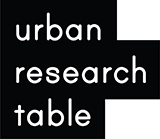URT Members Published a New Paper on Public Life in Tokyo!
URT members published a new paper in UA 城市建筑 Urbanism and Architecture journal (ISSN 1673-0232 CN 23-1528/TU), 2018(6), pages 108-118. The paper is titled Public Space for Sedentary Activities in Tokyo: Unnecessary and Undesired Luxury?, and you can access the preprint version of the article on ResearchGate. You can also read it in English and Chinese in the journal.
Abstract
Public life in large cities has been adversely affected by privatization and commodification of urban space. Permitted or encouraged activities and behaviors have been narrowed down, giving way to primarily functional and pragmatic uses. Have streets become mere conduits of human flows? Tokyo has a history of transit-oriented public spaces. The specific condition of public space in Tokyo has its roots in both historical and infrastructural developments, such as the dominant role railway stations play in the formation of areas. This paper aims to examine the current situation of public space for sedentary (seated) activities (PSSA) and to show that the need for such non-commercial activities is present even in mostly transit-oriented areas. Walk-through observations were conducted in outdoor and indoor space accessible for free in areas around Shinjuku train station in Tokyo, as it is one of the biggest transportation hubs in the world, and the need for smooth mobility governs the area around it. Designated and improvised PSSA and activities of pedestrians were mapped and examined through statistical analysis. The recorder number of observed designated PSSA was low, with most seats indoors. Pedestrians also engaged in less optional than necessary activities. They did; however, display social behaviors, which served to show their need for PSSA. They further expressed that desire by using a large variety of improvised elements for sitting, including some uncomfortable or unsafe ones. The findings suggest that even in high-density and high-mobility areas in large cities, sedentary activities cannot be excluded from public space. Even though priority is given to functional properties of public space, the fact is that pedestrians indicate the traditional street-oriented urban spaces are desirable and should be overlooked by neither private nor public providers.
